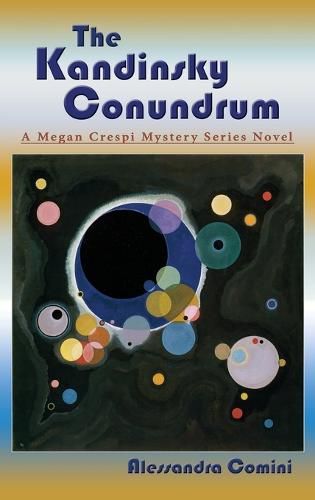Readings Newsletter
Become a Readings Member to make your shopping experience even easier.
Sign in or sign up for free!
You’re not far away from qualifying for FREE standard shipping within Australia
You’ve qualified for FREE standard shipping within Australia
The cart is loading…






This title is printed to order. This book may have been self-published. If so, we cannot guarantee the quality of the content. In the main most books will have gone through the editing process however some may not. We therefore suggest that you be aware of this before ordering this book. If in doubt check either the author or publisher’s details as we are unable to accept any returns unless they are faulty. Please contact us if you have any questions.
A moving van filled with eleven Wassily Kandinsky paintings stolen from Munich's famous Lenbach House Museum during a violent neo-Nazi demonstration is hijacked in Slovakia. Two rival Kandinsky collectors appear to be involved: Igor Rasputin of Odessa, visiting in Munich, and Boris Zima of Moscow, whose agent Raisa Sokolova is keeping tabs on Rasputin. Puzzlingly, the museum adamantly declares there has been no theft, even though its night watchman has been found murdered. Also visiting Munich is retired art history professor Megan Crespi, slated to give a lecture she titles, curiously enough, "Double Kandinsky." In between visits to "mad" King Ludwig's fantasy castles, Megan comes into contact with possible suspects, ranging from Rasputin to Iris and Laszlo Togarassy, owners of Munich's new The Blue Rider gallery featuring Kandinsky's works, to Katrina Keller, associate director of the Lenbach. Manipulating events connected with the theft are a young, careless gambler who owns a building behind the Lenbach, two men from the Ukrainian island of Amiinyi-one a computer wizard, the other a science photographer-and their Munich engineer friend Alyksandr Miesel, neo-Nazi leader Walter Krankenhauer, and Detective Dieter Loeser. Crespi's lecture, including results of state-of-the-art XRF technology, becomes the revelatory preamble to a thrilling denouement that cracks the Kandinsky conundrum. Includes a Readers Guide.
$9.00 standard shipping within Australia
FREE standard shipping within Australia for orders over $100.00
Express & International shipping calculated at checkout
This title is printed to order. This book may have been self-published. If so, we cannot guarantee the quality of the content. In the main most books will have gone through the editing process however some may not. We therefore suggest that you be aware of this before ordering this book. If in doubt check either the author or publisher’s details as we are unable to accept any returns unless they are faulty. Please contact us if you have any questions.
A moving van filled with eleven Wassily Kandinsky paintings stolen from Munich's famous Lenbach House Museum during a violent neo-Nazi demonstration is hijacked in Slovakia. Two rival Kandinsky collectors appear to be involved: Igor Rasputin of Odessa, visiting in Munich, and Boris Zima of Moscow, whose agent Raisa Sokolova is keeping tabs on Rasputin. Puzzlingly, the museum adamantly declares there has been no theft, even though its night watchman has been found murdered. Also visiting Munich is retired art history professor Megan Crespi, slated to give a lecture she titles, curiously enough, "Double Kandinsky." In between visits to "mad" King Ludwig's fantasy castles, Megan comes into contact with possible suspects, ranging from Rasputin to Iris and Laszlo Togarassy, owners of Munich's new The Blue Rider gallery featuring Kandinsky's works, to Katrina Keller, associate director of the Lenbach. Manipulating events connected with the theft are a young, careless gambler who owns a building behind the Lenbach, two men from the Ukrainian island of Amiinyi-one a computer wizard, the other a science photographer-and their Munich engineer friend Alyksandr Miesel, neo-Nazi leader Walter Krankenhauer, and Detective Dieter Loeser. Crespi's lecture, including results of state-of-the-art XRF technology, becomes the revelatory preamble to a thrilling denouement that cracks the Kandinsky conundrum. Includes a Readers Guide.